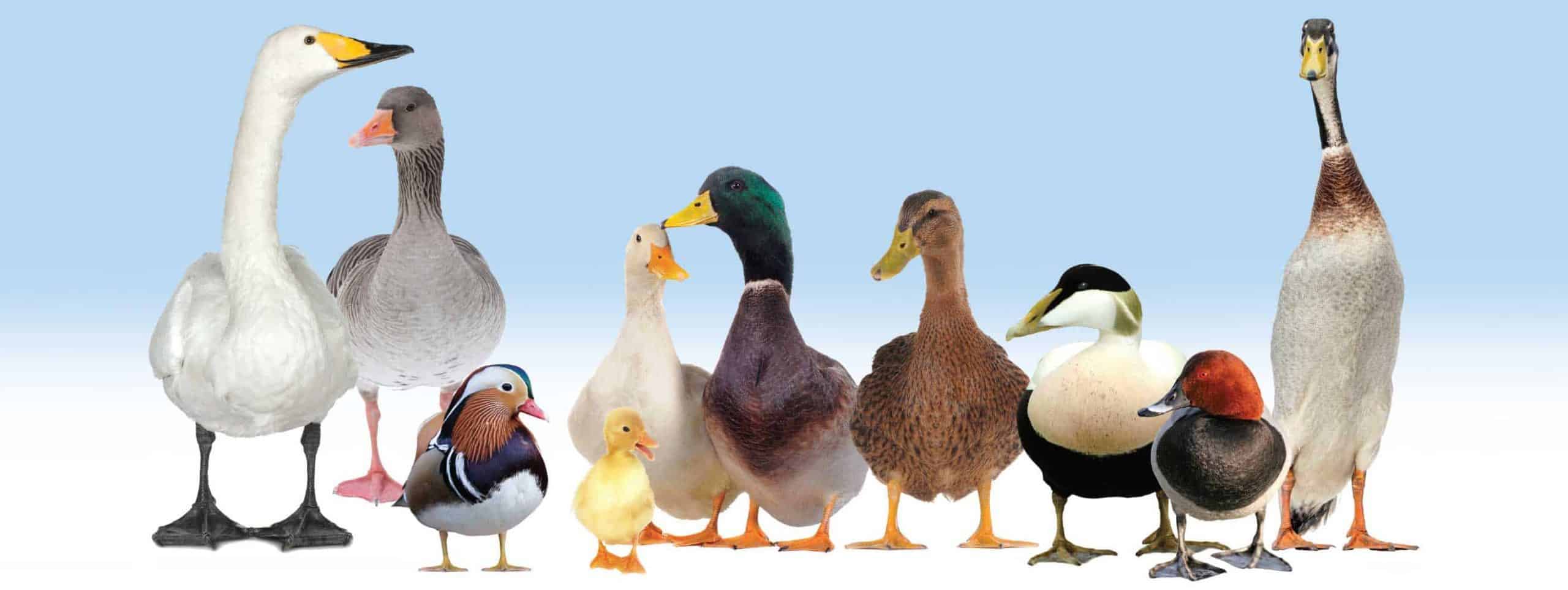We are asked about all sorts of waterfowl-related matters. These are some of the most common subjects:
In England it is DEFRA’s current policy to not permit the vaccination of birds (outside of zoos) as an immediate disease control response. Stamping out coupled with a high standard of biosecurity, separation of poultry from wild birds and careful surveillance for signs of disease remain the most effective means of controlling the disease and protecting other animals. This policy is in line with international standards of best practice for disease control.
Currently available avian influenza vaccines have disadvantages in that while they may reduce mortality, it is possible that some vaccinated birds would still be capable of transmitting the disease if they became infected whilst not displaying symptoms. This would increase the time taken to detect and eradicate the virus.
However avian influenza vaccination policy is kept under regular review in light of any scientific developments in the availability of effective vaccines. See DEFRA guidance on avian influenza vaccination.
Derogation from culling for ‘breeds at risk’ is not granted automatically in a notifiable disease outbreak and will depend on veterinary risk assessment.
Your facilities and procedures will need to be in place before it happens. Read about The FAnGR Committee’s guidelines for breed societies on contingency planning for preservation of their genetic resources in case of a notifiable disease outbreak here.
The current bird flu is the largest ever UK outbreak of avian influenza (prior to this the largest number of cases was 26 cases in 2020/2021 and 13 cases in 2016/2017). This winter, 2021/22, it is consistantly H5N1, a highly pathogenic virus which is naturally transmitted between birds which gather together or come into contact with contaminated faeces.
Wild waterfowl have a natural daily cycle of moving between feeding areas and night-time roosts. Though all birds can catch and transmit bird flu, it is particularly the waterfowl that can get it without having clinical signs/serious loss of ability. Older birds which have some long-term immunity over years of exposure are the most likely here. By their natural movements they can spread disease to other birds using a water body.
Young birds, naive to past infection, are most likely to get seriously unwell. Many of the geese have long lifespans and will have met various strains before. Our kept birds may have never been exposed to disease, or we may have a large number of young birds.
As difficult as it may be, it is very important to keep captive waterfowl away from wild waterfowl and vice-versa.
Further guidance on disease movement control and licences can be found (under the section ‘licences’) via the following links:
|
Yes they will! But you will need to contain them and protect them from predators.
Geese are primarily grazers: heavy breeds will have a larger appetite for keeping grass trimmed, but they may nibble low-hanging fruit or other garden plants. You wouldn’t expect the giant breeds like Toulouse to cover as much area, or cope as well with steep ground than nimbler ones. Czech Geese are our shortest breed, so would be more likely to concentrate on the grass. Their small size would mean that a larger flock of them would be required to do the job.
Grazing with geese will not always be even. They will tend to have favoured areas, especially around ponds. Once grass gets long, it will often be ignored in preference to shorter areas. The newest growth is the most palatable and nutritious.
If you keep any waterfowl they will love a large pond, but you will need to fence them in and predators out. Even if you have never seen a fox, they will be about.
The current biosecurity requirements due to Bird Flu are that captive birds are prevented from having access to large open bodies of water. This is because the risk of transmission is significant from wild birds at the moment.
If you wish to keep non-native species, you will need to prevent them flying off. Especially when they hatch youngsters. Any captive birds are an attractive meal for predators — have a look at our fencing page.
Ducks, geese and swans all need water, but in numbers they will substantially change the biology of the pond. Nitrogen levels will rise, tasty plants and smaller creatures will get eaten.
The natural diet of waterfowl is varied; vegetation, seeds and aquatic animals. Many are adept at exploiting any available food source. Highly processed white bread will fill an empty belly, but it is lacking in many dietary essentials. There are better alternatives, such as chopped green vegetables, sweet corn or peas. Duck, goose and swan food is readily available and provides a balanced diet. Wholemeal bread is better than white.
Feeding the birds on a local pond or river is a pleasure that has started many on the path of enjoying waterfowl, but there are some pitfalls.
Artificial feeding encourages an unnaturally high population. High densities of birds can lead to disease, poor water quality and territorial disputes. The margins of the waterbody may become eroded and muddy, birds may fail to disperse at natural migration times. Waterfowl will hoover up most small living creatures, so there will be a loss of biodiversity. Uneaten artificial food encourages vermin. Some, like rats, can harbour disease and cause issues for human health.
Hard as it is to imagine, there are some who do not like waterfowl, mainly for these reasons. In a public space there will be many different opinions.
Yes they will! Ducks have traditionally been used for organic pest control in smallholdings, gardens and vinyards.
All breeds of duck will eat bugs. Runners are traditionally used as they can reach the highest, and can forage over a wide area quickly. Bantam ducks’ small bills may be able to reach places their larger relatives ones may not, though they can also be more difficult to contain.
The area will need to be predator proof of course.
In Mallards and their domestic descendants, drakes (male) have a soft rasping voice, but the ducks (female) are the ones with the harsh ‘quack’. Anything that gets birds excited can make them have something to say.
The Call Duck was specifically bred to ‘call’ wild Mallard in for hunters. Over time, the small size and nice nature of this breed has made it understandably popular as a pet and exhibition bird. The Call is probably the noisiest of the ducks. Definitely something to be aware of if you have close neighbours.
Some of the wildfowl have plenty to say, but this is usually running up to the breeding season.
If in doubt, try to visit someone who has some of the birds you are interested in.
The most likely waterfowl you will regularly see close to human habitation inland are:
Feral ducks — ones that were once domesticated but now live in the wild. Escaped or deliberately released.
Feral geese — ones that were once domesticated but now live in the wild. Escaped or deliberately released.
You will find all the waterfowl listed in taxonomic order (that is approximately the order in which they evolved) under the menu. There is also an A to Z guide on the Home Page.
White bibs on ducks are a good indicator of domestic blood in the family tree. Mallard genetics are widely studied and understood, the bib is a dominant trait.
It is useful to look at where a bird is expected to be found. A mottled slate-blue duck with a slightly odd beak is not likely to be a Blue Duck, unless you are reading our pages in New Zealand!
Shutting birds in is largely a matter of convenience & cost in giving them protection from predators. Domesticated waterfowl adapt well to being housed and can easily be trained to settle into a shed at night. Bribery and routine are all you need. Egg collecting from housed birds is usually easier than scouring the hedgerows for secret nests!
Wildfowl are usually not so keen to be under cover. Keepers of these use high fences, usually with electric outer wires, to protect their collections.
Waterfowl are easy to care for, but with any livestock there is a commitment. The ideal solution is to find someone nearby who will take on the birds.
We have a network of members all over the country, keeping all kinds of waterfowl. If you need help with re-homing, please tell us what breeds/species there are (if you know). Photographs can be helpful.
Contact secretary@waterfowl.org.uk and we will do our best to help.
Controls on bird gatherings are made through amending / revoking the bird gatherings general licence and not through any of the Avian Influenza Prevention Zone (AIPZ) measures.
Gatherings include (but are not limited to) bird fairs, markets, shows, sales, exhibitions, and some premises used for dealing or internet sales. In addition, vehicles used to transport live birds where the birds are brought together from multiple premises (so called many-to-one or many-to-many activities) are also considered gatherings.
Bird gatherings are not permitted within a disease control zone, outside of these areas bird gatherings are only permitted if licensed. Keepers can check the Animal and Plant Health Agency (APHA) interactive map to see the location of disease control zones currently in force.
Bird gathering general licences have been made available by Defra, Scottish Government and Welsh Government permitting bird gatherings in England, Scotland, and Wales respectively including in areas where an enhanced Avian Influenza Prevention Zone (AIPZ) with housing measures is in place (but not in disease control zones surrounding infected premises), provided they have been notified to the Animal and Plant Health Agency (APHA) at least 7 days before the event and that the gathering meets all the requirements of the relevant general licence.
However, at the time of publication the bird gatherings general licence currently available each of the three GB administrations do not permit gatherings of poultry (Galliformes or Anseriformes birds). Galliforme birds include pheasants, partridge, quail, chickens, turkey, and guinea fowl. Anseriforme birds include ducks, geese, and swans. Gatherings of all other types of birds including pigeons/bird of prey are still permitted, provided that the APHA has been notified of the gathering at least 7 days before the event and that the gathering meets all the requirements of the general licence.
Further guidance for bird gatherings has been published on GOV.UK. Definitive requirements are set out in the published General License for the relevant administration (England, Wales and Scotland).
The status of the bird gatherings general license will be kept under regular review as part of the government’s work to monitor and manage the risks of avian influenza, and any decisions on amending or withdrawing the general license will be based on risk assessments containing the latest scientific and ornithological evidence and veterinary advice.


